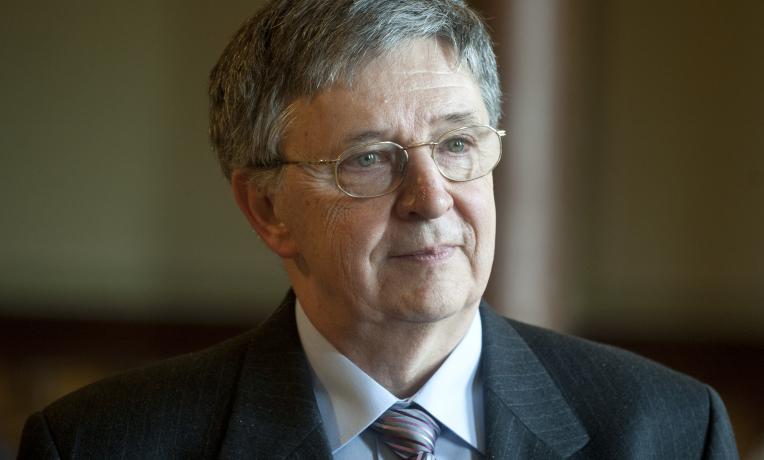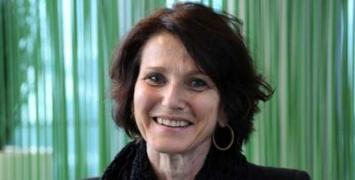
Distinguished mathematician László Lovász, from the Eötvös Loránd University in Hungary, was recently awarded the Abel Prize together with computer scientist Avi Wigderson. The prize recognizes contributions to the field of mathematics that are of extraordinary depth and influence, and is often compared to a “maths Nobel”. We took this opportunity to speak to Professor Lovász about his career as well as his current ERC Synergy Grant project.
One of the functions of the Abel Prize is to inspire younger generations. What advice would you give to those that may have not yet discovered the beauty of mathematics, and those who have just started in the research world?
For students in school, I would say that they should try to find the joy of mathematics. Many people like to play chess, and mathematics is not such a different activity. Chess has the competition element, which is of course very motivating. But it's primarily a puzzle, and many people like to solve puzzles. That's essentially mathematics. Another inspiring thing is the role of mathematics in our world, for example, in the design of these mobile gadgets that people are more and more attracted to - or maybe even addicted to! Mathematics makes them possible.
As regards graduate students, I would advise them not to only concentrate on one single problem. I always thought that it was nice to understand what other students were working on, even if it was not in my own immediate area. Quite often the greatest or best results in maths can be obtained when you understand that in another area, there is some work, there are some results, some methods, maybe even some theories, which are formulated so that you have to work on understanding them, maybe with the help of your friends. But it turns out that they are really about something that is similar (to your own problems) and they give you important ideas, sometimes even methods to solve your own problems. These bridges between different parts of mathematics have always been very successful, whenever they were built.
You were instrumental in building bridges between mathematics and computer science. How did you become involved in that?
There was a very exciting time starting around 1970 in mathematics and computer science. My areas of graph theory and discrete mathematics were one of the first whose whole thinking was reworked due to concepts from the theory of computing. After all, computers work digitally, so it’s discrete mathematics that you use to describe what the computer does.
Many of us have stayed in this border area between mathematics and the theory of computing. In fact, the other Abel prizewinner Avi Wigderson thinks that the theory of computing is simply a branch of mathematics, which I think intellectually is right. Of course, socially, it's a little bit different because it belongs to a much larger area of informatics or information science.
The 2021 Abel Prize was awarded to László Lovász and Avi Wigderson "for their foundational contributions to theoretical computer science and discrete mathematics, and their leading role in shaping them into central fields of modern mathematics." They won for their work developing graph theory and complexity theory, respectively, and for connecting the two fields.
What do you consider your major scientific achievement?
The (Abel prize) cites the LLL lattice base reduction algorithm, which grew out of combinatorial optimization and out of classical number theory.
The (Abel prize) cites the LLL lattice base reduction algorithm, which grew out of combinatorial optimization and out of classical number theory.
This turned out to be applicable to testing the security of cryptographic protocols.
There are also other issues within theoretical computer science that I have worked on and am proud of, such as the development of methods to prove that certain optimization problems cannot be solved, even approximately.
Is there a particular result you would like to achieve that has so far escaped you?
Well, of course, I have some problems that I am still working on. In the last 18 years or so, my main research was the limit theory of graphs. Take larger and larger networks, for example the Internet, which is still growing. On the one hand, as they grow, they become more and more complex and more and more difficult to understand. On the other hand, they usually become, in a sense, more and more similar. Many behave similarly, simply by laws of large numbers. So the question is can you model some kind of a limit where you imagine that the size goes past any concrete boundary. We have a theory of how to define this limit but it's not complete yet.
The nice thing about mathematics, if you answer one question then probably you discover more questions. I think it's so in every science.
You have had a long and distinguished career. What keeps you motivated to continue to push the frontiers of knowledge?
Working on something you love is very special. I think it's curiosity which drives me and also my colleagues. This is, in a sense, a permanent dilemma. Namely, you learn about all these questions coming from different areas, but you can divide your time between two or three of these questions, not more.
In 2018 Professor Lovász, together with Jaroslav Nešetřil from Charles University in Prague and Albert László Barabási from Central European University in Budapest was awarded an ERC Synergy Grant. The project DYNASNET aims to develop a mathematically sound theory of dynamical networks.
What questions are you working on at the moment?
Currently I am mostly working on the Synergy Grant project. I view it as an interesting experiment. The team convinced me (to join) quite quickly. I had known about the work of László Barabási, and I always felt that we are talking about very similar problems, very large graphs constructed by random procedures. Our own group had a long collaboration with Jarik Nešetřil, so it was natural to involve his team too.
We are trying to develop a feeling of what kind of mathematics is inspired by the study of actual physical networks, like the network of neurons of animals. Geometry, including the volume of the connections and the distance of the nodes puts substantial restrictions on these networks, and it is interesting and challenging to translate this into graph theoretic properties.
One of several topics within our original DYNASNET project proposal was the network-based modeling of epidemics. That was a year before the COVID epidemic. Of course, when we got into the current situation, everybody became motivated to focus on the question of disease propagation.
We study the role of the distribution of initial infection on the severity of epidemics.
We study the role of the distribution of initial infection on the severity of epidemics. An unexpected conclusion we made is that the relative severity of infections starting in the central region (core) and in the periphery, depends in a non-monotone way on the infection rate. With low infection rates, epidemics starting in the central region are more dangerous, while for higher infection rates it is the other way around.
If we can fully understand these mathematical phenomena then it could help ensure that in future the data we collect about a disease will be gathered in a way that helps with prediction, and probably even strategies to prevent the spread of disease.
How important do you feel it is to fund curiosity-led frontier research?
Bottom-up curiosity-driven research has to get support. It's very important because in the long run it will guarantee that new methods, new technology, new medical procedures will emerge. Maybe not twenty years from now or even thirty years from now. A mathematical problem can take decades to solve. It takes time for something to find a real impact on our lives.
For example, the work of Katalin Karikó on mRNA vaccines started about 40 years ago. She is now senior vice president at BioNTech, working with the ERC grantee Uğur Şahin (whose team, together with Pfizer, developed a COVID vaccine). The ERC has a good understanding of scientific research being not short term. You need five or six years to actually achieve something.
It’s also a question of whose curiosity is being supported! And that’s where you have to be very selective. Some people are very good at asking very good questions, so you have to be able to find those people and support, build on their knowledge. The ERC is very important from this point of view.
László Lovász is one of the most prominent mathematicians of the last fifty years. One of the major impacts of Professor Lovász’s work has been to establish ways in which discrete mathematics can address fundamental theoretical questions in computer science. Recipient of several prestigious prizes, he was the president of the International Mathematical Union from 2007 to 2010 and the president of the Hungarian Academy of Sciences from 2014 to 2020. He is currently professor emeritus at the Eötvös Loránd University in Hungary.





